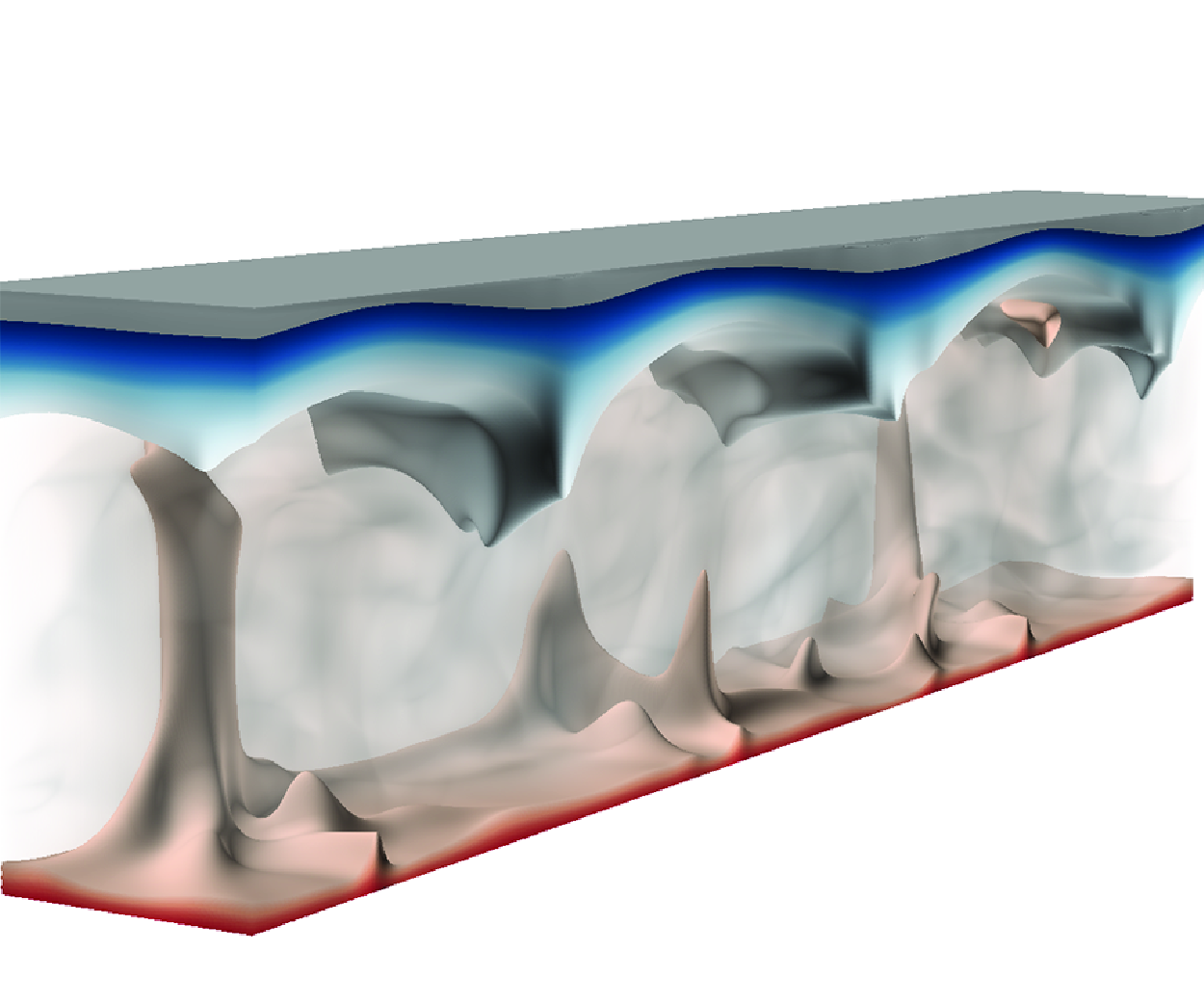No CrossRef data available.
Published online by Cambridge University Press: 18 June 2025

The dynamics of ice basal melting in seawater is one of the key factors in understanding and modelling the ice–seawater interaction in the polar oceans. In this work we study the basal melting of solid ice in seawater, and focus on the interaction between the melting process and the double diffusive convection developed in the seawater layer. Different temperatures and salinity differences are systematically simulated, and two different flow regimes are identified. For a relatively weak salinity difference, the convection layer occupies most of the liquid layer and grows in height as the ice melts. When the salinity difference is strong enough, the convection layer shrinks with time and a stably stratified layer grows between the ice layer and convection layer. When the dynamics is dominated by the convection layer, the global heat and salinity transfer rates follow a power-law scaling. Theoretical models are developed for the local mean salinity at the ice–water interface and the melting rates, and the critical density ratio corresponding to the transition between the two regimes, which all agree with the numerical results. Density inversion happens consistently adjacent to the ice–seawater interface, which has a profound influence on the ice surface shape. All these findings provide useful insights into the detailed dynamics of ice basal melting in oceans.